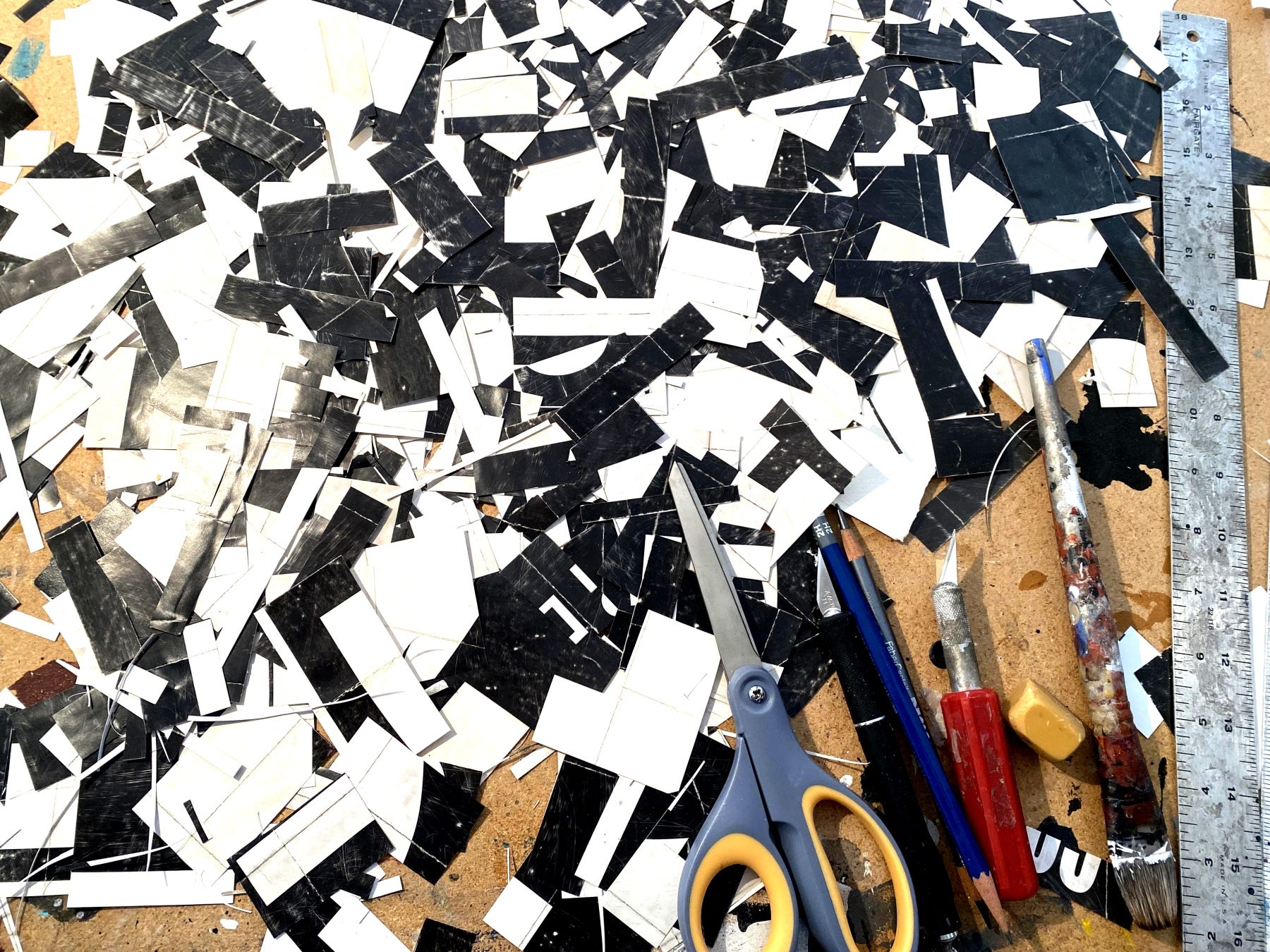Embracing Chance: A Scientific Approach to Art
For artists seeking a way to eliminate creative blocks, frustration, or the fear of failure, consider shifting your approach—treat your art as an ongoing experiment rather than a pursuit of perfection. By embracing a scientific, process-driven method, you can remove the need for inspiration and free yourself from the constraints of expectation.
Adopt an Experimental Mindset
Start with a simple What if? question. Rather than aiming for a specific result, explore different ways to test your idea. Think of your work as a series of experiments—each attempt provides information, and every variation adds to your understanding.
Incorporate chance into your process. Experiment with randomness, unexpected techniques, or unconventional materials. Avoid judging your work too early. Instead, maintain a "Results Pending" mindset, knowing that every outcome is valuable in its own way. Without expectations, there is no failure—only discovery.
Refine Through Observation
Once you’ve created a series of pieces, lay them out as a set and analyze them. Identify what works and what doesn’t. Rather than discarding pieces entirely, consider what elements appeal to you and why. Adjust your methods to replicate those aspects more consistently while refining your process along the way.
Keep tweaking and experimenting. Layer new ideas on top of previous ones, keeping your creative evolution in motion. This ensures that you never run out of new discoveries.
Seek Efficiency and Elegance
Art doesn’t have to be complicated to be meaningful. Look for ways to simplify your process while maximizing its impact. What techniques produce the most compelling results with the least unnecessary effort? Think like a scientist—seek elegant solutions that feel both natural and ingenious.
Also, recognize that taste is subjective. What you find uninteresting might resonate deeply with someone else. Avoid curating your work too rigidly based on personal bias. Instead, document everything—what doesn’t seem important now may become valuable later.
Assessing Your Work: A Shift in Perspective
Rather than searching for a singular artistic "voice," consider your work as a means of exploring something deeper – a universal voice. Creativity is not just about self-expression; it can also be about uncovering universal truths through intuition.
Many artists throughout history have embraced chance as part of their process. The surrealists, dadaists, John Cage, Marcel Duchamp, and Hans Arp all experimented with randomness and intuitive creation.
I think all of the different types of divination such as I Ching, Tarot, Runes, throwing bones, reading the tea leaves or entrails, are designed around the idea of communicating with this living force that I would not call randomness but rather a living Harmony or the Force or the Tao that lives through us and all living things as individuated consciousness – a kind of precipitation you could say.
The ever-present moment of now is the threshold of becoming where infinite potential particulates into physical existence. As artists we can place ourselves in a position where our art making is a result of being available for expressing this flowing force.
If you’re interested in this approach, look into the concept of Chance Aesthetics, a movement that has influenced modern art but often goes unspoken in mainstream discussions.
Stay in a State of Open Exploration
Above all, resist the urge to come to conclusions too soon. When working with elements of chance, remember that your understanding will always be evolving. Avoid forcing structure where it isn’t needed—let the process flow out of the moment.
Think of yourself as a channel rather than a creator in total control. Your role is to set up conditions where art can emerge naturally, much like a scientist conducting an experiment.
By shifting your mindset in this way, you can free yourself from creative anxiety, eliminate the fear of failure, and embrace an endless cycle of discovery. Your work will become not just an artistic pursuit, but a lifelong exploration of possibility.






Excellent article and interesting subject to ponder. I love the element of chance in my work or "intuitive creation" as you wrote......I can finally embrace "mistakes/accidents" that are the things that happen beyond my intuition or consciousness as I can either fix them to a point, keep them as they turned out better for the piece than had it not happened, and even be a bit 'jealous' of how something beyond my will turned out better than had I planned it that way. Of course I still have a conscious idea of how I will plan/create a piece but it's not planned to the atom of each thing as there is room for chance and perhaps something 'supernatural' beyond ME to take place. It's all "Grist for the Mill".